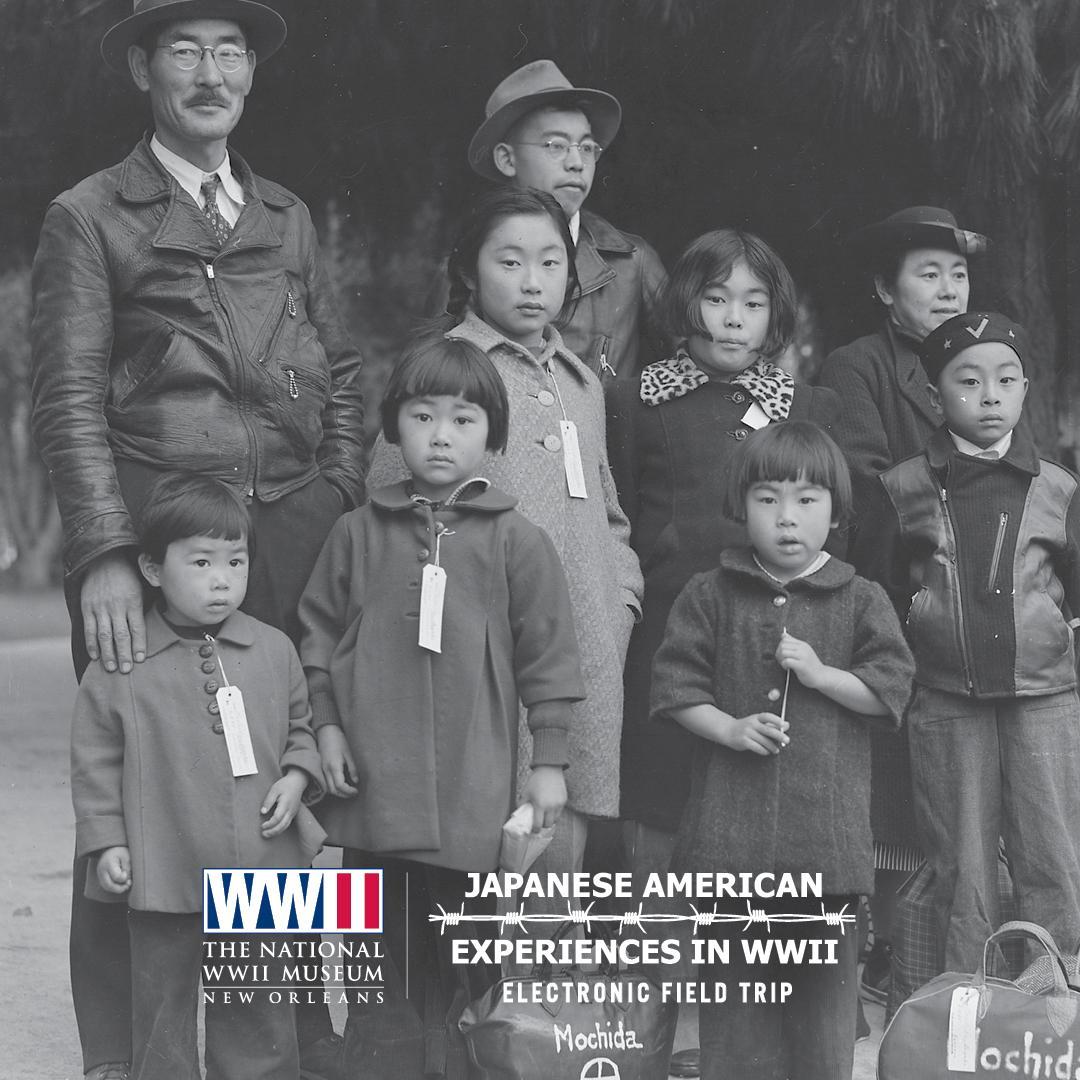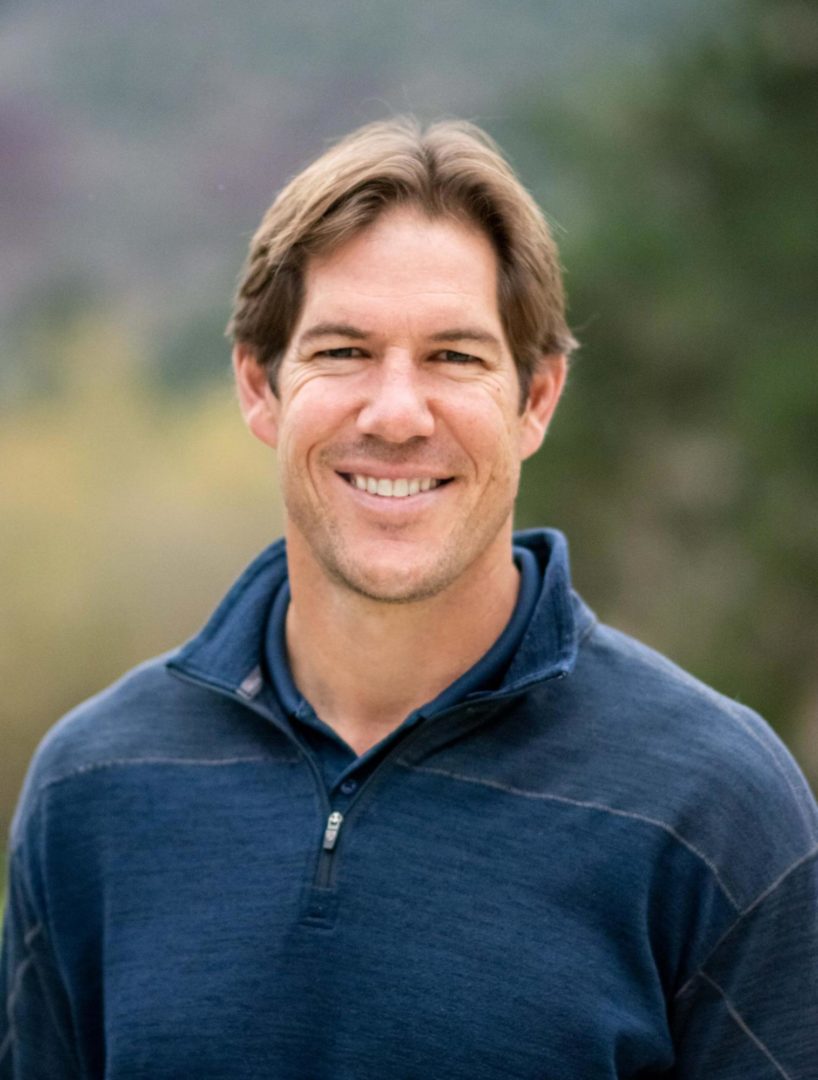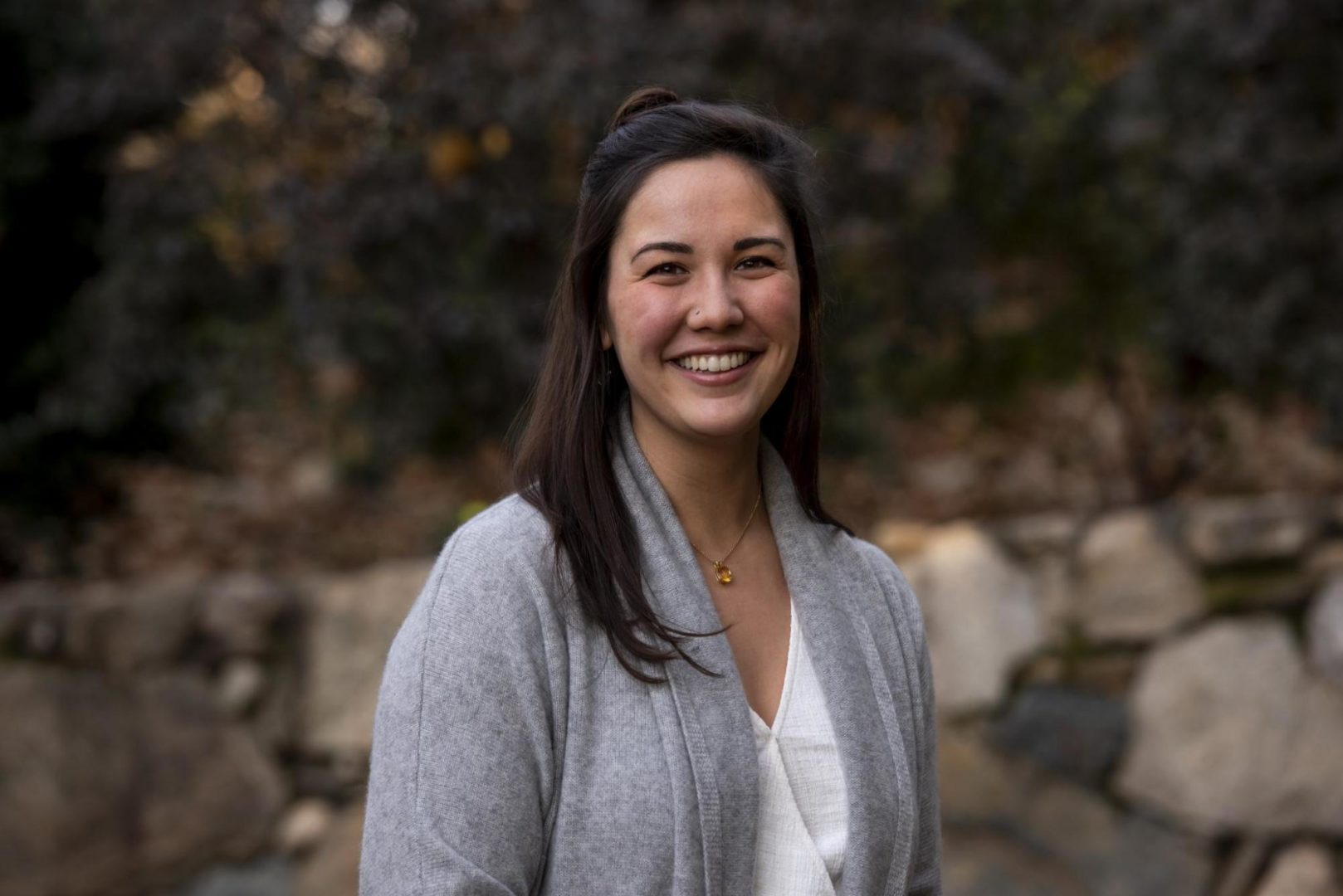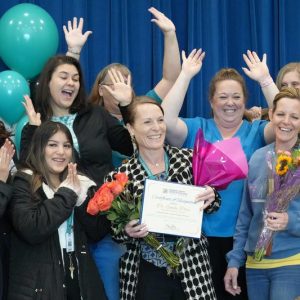 View Winners →
View Winners → 
Los Angeles area middle- and high-school students will be participating in The National WWII Museum’s annual electronic field trip (EFT) to be held on May 13 focusing on Japanese Americans’ incarceration during the war. It is significant that this year’s EFT falls during Asian-American Pacific Islander (AAPI) Heritage Month when we pay tribute to their contributions to our country’s culture, history, and achievements.
The National WWII Museum in New Orleans opened on June 6, 2000, the 56th anniversary of the largest seaborne invasion in history, as the D-Day Museum. In 2003, Congress designated it as the official WWII museum of the United States. Its six-acre campus encompasses five pavilions which house historical exhibitions, on-site restoration work, a period dinner theatre, and restaurants.
Its website describes, “Offering a compelling blend of sweeping narrative and poignant personal detail, The National WWII Museum features immersive exhibits, multimedia experiences, and an expansive collection of artifacts and first-person oral histories, taking visitors inside the story of the war that changed the world. Beyond the galleries, the Museum’s online collections, virtual field trips, webinars, educational travel programs, and renowned International Conference on World War II offer patrons new ways to connect to history and honor the generation that sacrificed so much to secure our freedom.”
In its press announcement, The National WWII Museum informs that more than 1,100 L.A. County students will participate in an hour-long virtual journey into the shoes of young Japanese Americans who were forcibly removed from the West Coast after the United States’ entrance into World War II. The museum’s EFTs cover compelling World War II topics streamed directly into classrooms across the country, no special technology required.
This year’s Japanese American Experiences in WWII EFT features student reporters based in California and New Orleans, as they gather accounts from those who experienced the Japanese American incarceration firsthand and receive an up-close look at primary sources and artifacts. The session will include classroom polls and Q&As, and is complemented with a curriculum that is available for download on the museum’s website.
Via email, The National WWII Museum’s Director of Distance Learning, Chrissy Gregg, explains, “The Electronic Field Trips began in 2015 and this Japanese American Experiences EFT is our sixth program of this type. These programs began as an initial partnership between the Museum and our local public broadcasting station, but they’ve evolved into a Museum production that showcases important sites and stories from World War II through the lens of our student reporters.
“In all productions, The National WWII Museum makes an audition call for student reporters both locally and then in whatever location we are filming outside of New Orleans. For our reporters outside of New Orleans, we work with fellow museums or organizations involved in the Electronic Field Trip to share this with their educator networks. This year’s EFT is especially noteworthy because the Heart Mountain Interpretive Center in Wyoming brought this opportunity to the attention of Amy Mass and her grandson, Ryo Martinez-Mass. He is our first student reporter to actually interview a living relative (his grandmother Amy Mass) who personally experienced this event.”

All 50 states have been participating in the EFT according to Gregg. She says, “The Museum has a large list of schools that we work with and provide programming to, all across the country. We also send marketing and email blasts to constituents to spread the word, in addition to promoting the Electronic Field Trips through the media.”
Gregg adds that California schools have participated in every broadcast beginning with The Museum’s 75th Anniversary of Pearl Harbor program in 2015. Each year, the number grows significantly. As of right now, there are 264 sites in California registered with 4,773 students and still growing. California numbers of students for each EFT are as follows:
- 75th Anniversary of Pearl Harbor: 667
- Fighting for the Right to Fight: African Americans in WWII: 1,542
- 75th Anniversary of D-Day: 3,761
- The Manhattan Project 3,312
Asked about the scope of the curriculum, Gregg replies, “We try to address one major World War II topic a year that we know is being taught in schools. On occasion, these broadcasts are also tied to anniversaries like Pearl Harbor, D-Day or the end of the war. Teachers can access curriculum related to the World War II Home Front at ww2classroom.org, and additional pre- and post-Electronic Field Trip resources are also available on the Museum’s Flipgrid page.
Discloses Gregg, “This is one of the first EFTs we’ve hosted with many direct participants with personal connections to the story: student reporter Ryo Martinez-Mass and his grandmother Amy Mass; Walter Imahara; our editors at Japanese American Memorial Pilgrimages; our script writer Helen Yoshida; and of course our host, Super Bowl winning former NFL linebacker for the New Orleans Saints Scott Fujita and expert Erin Aoyama.”
Scott Fujita is a Super Bowl-winning former NFL linebacker and beloved member of the New Orleans Saints. He played 11 seasons in the NFL before retiring in 2013. He currently serves as Head of School at All Saints Day School in Carmel, Calif. His parents are Helen and Rodney Fujita. His father was born in Gila River incarceration camp during World War II and his grandfather served in the all-Nisei 442nd Regiment Combat Team.
Erin Aoyama is a doctoral candidate in American Studies at Brown University, where she works in the fields of comparative ethnic studies, and public humanities. Her dissertation project examines the afterlives of Japanese American incarceration and redress, with a particular focus on intersections between Japanese American communities and the Black freedom movement. She is a yonsei whose family was incarcerated at Heart Mountain in Wyoming during World War II. Her grandfather served in F Company of the 442nd Regimental Combat Team.

“This project has been important to me because I think it’s vital people learn and know about the Japanese internment,” student reporter Ryo states. “My grandmother’s story and the stories of other former internees need to be passed on to the younger generations now so they can be prevented from repeating. It’s also been a powerful experience personally, learning about my family’s history and my grandmother’s life.”
Through its various exhibitions and special events, The National WWII Museum lives up to its mission to “tell the story of the American experience in the war that changed the world – why it was fought, how it was won, and what it means today – so that all generations will understand the price of freedom and be inspired by what they learn.”
The National WWII Museum’s EFT shows what Japanese Americans suffered because of a war they didn’t personally start. Many of the men and women who were sent to internment camps as adults have already passed away. But their sacrifice and experience didn’t die with them – they are acknowledged and memorialized.
And it is only fitting that on AAPI Heritage Month, young students are learning about events and people that were far removed from their circumstances but have shaped the country they are growing up in. Maybe they will be a generation of Americans who will treat someone who doesn’t look like them not with disdain or suspicion but with acceptance and inclusion.





































































































